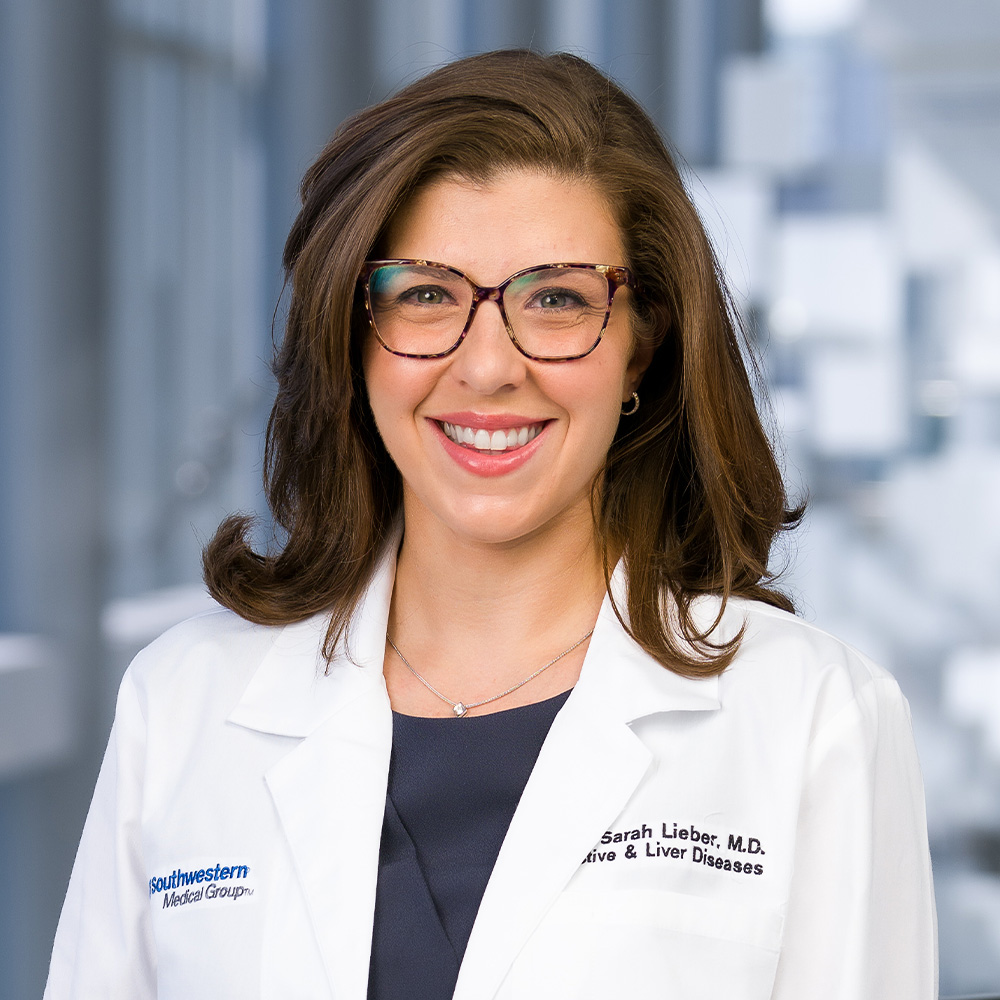Liver transplant survivor’s recovery linked to sociodemographic factors, UTSW study shows
Positive coping, resiliency, post-traumatic growth, and psychiatric symptoms vary at different stages after surgery

DALLAS – April 26, 2023 – The resilience and coping abilities of patients who’ve had liver transplants vary and change over time and are often linked to sociodemographic factors including income, race, and education, a study led by UT Southwestern Medical Center researchers shows. The findings could lead to tailored interventions to optimize clinical and patient-centered outcomes among liver transplant recipients.
“When we take care of patients who have gone through this life-changing surgery, recovery really evolves over time,” said transplant hepatologist Sarah R. Lieber, M.D., M.S.C.R., Assistant Professor of Internal Medicine and a member of the Division of Digestive and Liver Diseases. “We don’t fully understand or capture that with current metrics that focus on mainly clinical outcomes such as survival. The aim of this project was to get a more in-depth view of novel patient-reported concepts at different stages of survivorship.”
Dr. Lieber led the study published in Liver Transplantation, working with UTSW mentor Amit G. Singal, M.D., M.S., Professor of Internal Medicine, a member of the Division of Digestive and Liver Diseases and the Harold C. Simmons Comprehensive Cancer Center, Medical Director of the Liver Tumor Program, and Chief of Hepatology.
Transplantation offers the chance for a cure for thousands of patients in the U.S. every year with diseases or trauma that affect the liver. Although more than 70% who receive this surgery survive at least five years, Dr. Lieber said, their recovery can be filled with physical, emotional, and psychological challenges. Liver transplant survivors must adapt to a new life that includes strict medication adherence, frequent clinical monitoring, and unanticipated complications.
To better understand what factors influence survivorship, Dr. Lieber and colleagues emailed surveys to hundreds of patients who received liver transplants between January 1990 and November 2019 and were followed at the University of North Carolina Liver Transplant Center.

The surveys collected sociodemographic information such as age, sex, race, ethnicity, education level, and income; pre-transplant characteristics such as reason for transplantation, waitlist time, and psychiatric history; and post-transplant characteristics including length of hospital stay, employment status, and whether patients had a caregiver. They also included survey questions validated for other chronic conditions to assess the patients’ abilities to positively cope as well as their level of post-traumatic growth (the ability to adapt and grow after a traumatic event), resiliency, and symptoms of anxiety and depression.
The researchers received 191 completed surveys from patients with a broad span of survival periods ranging from less than a year post-transplant to more than 10 years. A majority of respondents were male (about 64%) and Caucasian (about 84%) and ranged from 28 to 83 years old.
The surveys showed that although 85% in the early survival period (one year or less) had high post-traumatic growth, only about 15% of late survivors (between five and 10 years) had the same characteristic. High resilience was reported in only about 33% of survivors and was associated with relatively high income.
Lower resilience was seen among patients with longer hospital stays and later survival stages. Patients who reported a lower ability to cope after transplant were more likely to be 65 or older, non-Caucasian, have less education, or needed a transplant for nonviral liver disease. Dr. Lieber said about 25% of liver transplant survivors had clinically significant anxiety and depression, more frequent among early survivors and women with pre-transplant mental health disorders.
These characteristics could help predict clinical outcomes, she said. For example, anxiety and depression, the ability to cope, and resilience have been shown to predict how well a patient can self-manage care and interact effectively with the health system for other chronic diseases, and are important predictors for quality of life and functioning, such as the ability to return to work and engage in daily activities. Dr. Lieber and her colleagues plan to continue to study other facets of survivorship in liver transplant patients, such as how these variables change over time, which could help researchers develop tailored interventions to improve clinical outcomes and quality of life.
“High-quality care of patients after liver transplant includes treating the whole person,” Dr. Lieber said. “Survivorship research informs how we develop and implement interventions to help our transplant community.”
Alvaro Noriega Ramirez, a Clinical Research Assistant in the Division of Digestive and Liver Diseases, also contributed to this study.
This research was funded by the UT Southwestern Fund to Retain Clinical Scientists (UT-FOCUS), the American Heart Association (923721), the Doris Duke Charitable Foundation COVID-19 Fund to Retain Clinical Scientists, and the American College of Gastroenterology Junior Faculty Development Award.
Dr. Singal is a Dedman Family Scholar in Clinical Care and holds the Willis C. Maddrey, M.D. Distinguished Chair in Liver Disease.
About UT Southwestern Medical Center
UT Southwestern, one of the nation’s premier academic medical centers, integrates pioneering biomedical research with exceptional clinical care and education. The institution’s faculty has received six Nobel Prizes, and includes 24 members of the National Academy of Sciences, 18 members of the National Academy of Medicine, and 14 Howard Hughes Medical Institute Investigators. The full-time faculty of more than 2,900 is responsible for groundbreaking medical advances and is committed to translating science-driven research quickly to new clinical treatments. UT Southwestern physicians provide care in more than 80 specialties to more than 100,000 hospitalized patients, more than 360,000 emergency room cases, and oversee nearly 4 million outpatient visits a year.
